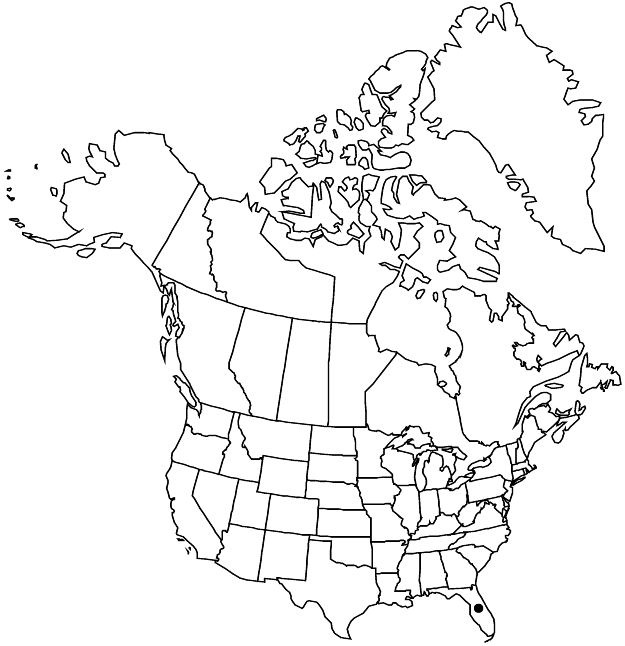Euphorbia telephioides
Fl. South. U.S., 402. 1860.
Herbs, perennial, with thickened rootstock. Stems erect or ascending, 20–30 cm. Leaves: petiole usually absent or indistinct, occasionally to 5.5 mm, blade elliptic or obovate, 31–60 × 7–32 mm, thick and fleshy, base attenuate or cuneate, apex acute, obtuse, or mucronate; venation pinnate with 8–13 lateral-veins, these sometimes obscure and only midvein evident. Cyathial arrangement: terminal pleiochasial branches (2–) 3, 5–13 cm, 3–7 times 2-branched; pleiochasial bracts ovate to oblong, 17–31 × 8–15 mm, margins entire, apex acute or obtuse; dichasial bracts ovate, 5–19 × 3–9 mm, margins entire, apex acute or obtuse; axillary cymose branches 1–5. Cyathia: peduncle 3–9.2 mm (often exceeding subcyathial leaves). Involucre campanulate, 1.3–2.3 × 1.6–2.5 mm, lobes ovate to oblong, 0.5–0.7 mm, ciliate; glands purple-red, oblong to trapezoidal, 0.5–0.7 × 0.8–1.2 mm, distal margins entire or crenulate. Staminate flowers 25–30. Pistillate flowers: gynophore exserted 1.9–3.2 mm, calyxlike lobes triangular, 0.2–0.7 mm; styles connate 1/4 length, 1.3–1.5 mm. Capsules ovoid-oblate, 5.2–5.6 × 6.6–8.3 mm, 3-lobed; columella 3.9–4.1 mm. Seeds blackish to dark-brown, ovoid to globose-ovoid, circular in cross-section, 3.2–3.5 × 2.6–3.1 mm, smooth, base rounded to flattened, apex rounded, occasionally with low point.
Phenology: Flowering and fruiting spring–fall.
Habitat: Scrubby pine flatwoods, grasslands, disturbed areas, often in sandy soils.
Elevation: 0–20 m.
Discussion
Euphorbia telephioides, federally listed as threatened, is known only from Bay, Franklin, and Gulf counties in the Apalachicola region of the east-central Florida panhandle.
Selected References
None.
Lower Taxa
No values specified."connate" is not a number. "distinct" is not a number."/4" is not declared as a valid unit of measurement for this property.
